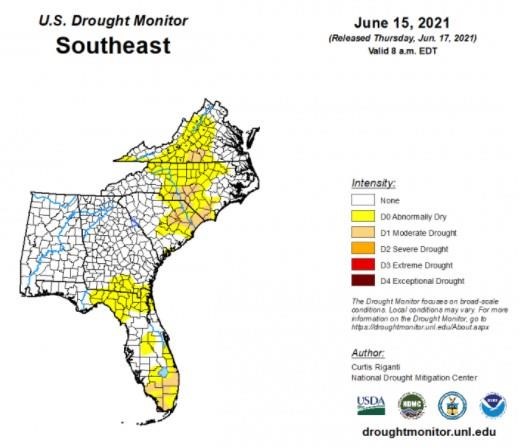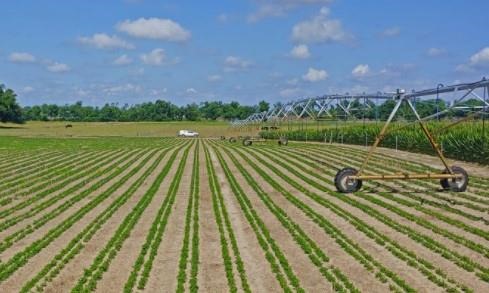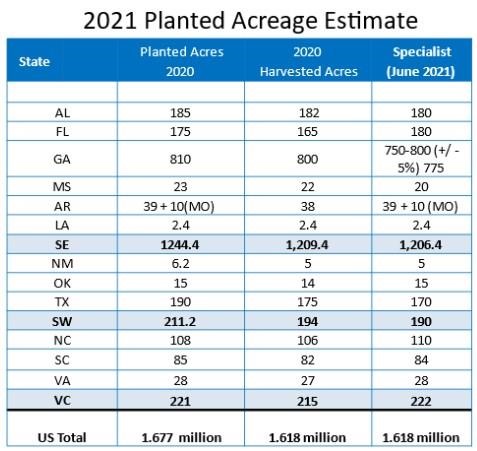This planting season started out well with most areas from Virginia to New Mexico having adequate moisture in late April, when planting typically begins for most of the peanut producing region. As planting season progressed, conditions became quite varied throughout the region. Cold weather delayed planting in some areas, some areas experienced drought while wet conditions hampered planting in other areas. Virginia and the Carolinas were abnormally dry or in a moderate drought for much of May and into June, as well as the Eastern Panhandle of Florida which has been dry since late April. As you see from the map below, moisture is now adequate in Florida’s peanut producing region west of the Apalachicola River. Even though Florida planted some peanuts under dry conditions and others in wet conditions, stands in general have been very good, for some farmers the best in recent years.

The main peanut variety grown in Florida is the Georgia 06G, although Florida has several good varieties like FloRun 331 and TUFRunner 297. The tri-state area of GA, FL and AL currently plant about 50-60% of peanuts in twin rows, and about 40-50% of the peanuts are planted using conservation tillage methods. More farmers in Florida are looking at planting peanuts following winter grazing (usually oats/rye) to enhance root growth of peanut. Likewise, we have found 40-70% less irrigation is needed due to the deeper and larger roots following cattle grazing.

Peanuts shown here were planted in twin rows using strip tillage after cattle had grazed oats/rye. This picture was made on June 1, 2021. Credit: David Wright, UF/IFAS
June is normally the time that growers start fungicide applications. Likewise, weed escapes may occur until peanuts cover the row middles providing help with late emerging weeds. Florida has potential for an excellent crop in 2021.
The table below shows a best guess from state peanut specialists as to what to expect for peanut acreage for each state.

Source : ufl.edu